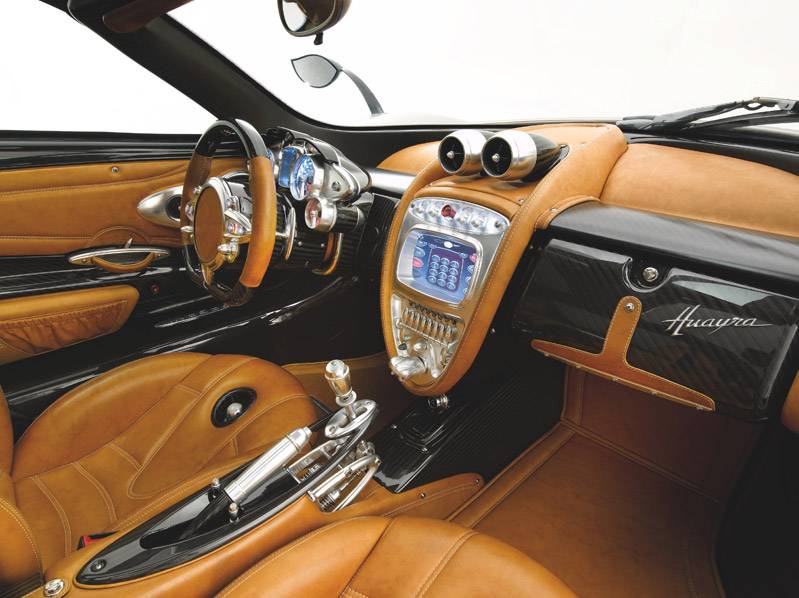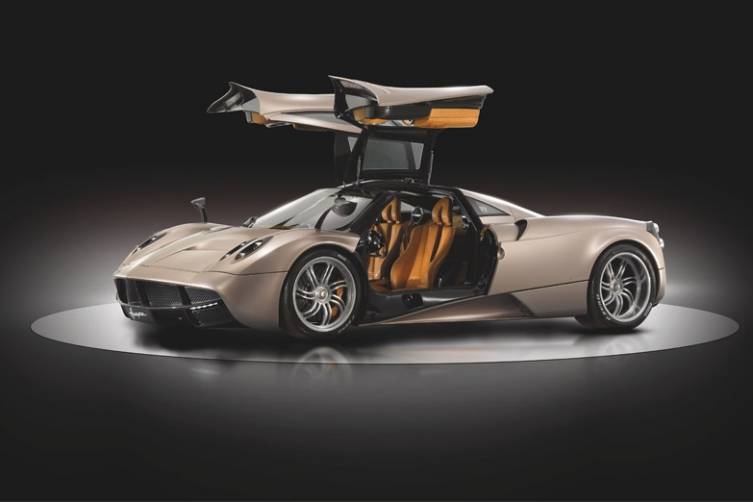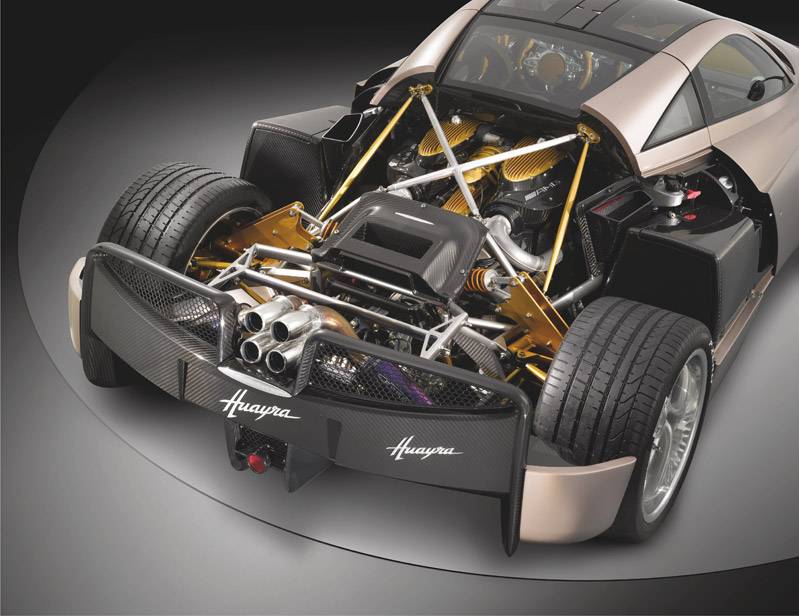Pagani Huayra

The Pagani Huayra 2014
A Really Quick Jewel Box
1955. Argentina. Horacio Pagani is born. This sounds like the start of some fable or apocryphal story about someone who really turned things around, right? I mean, the name “Horatio” features prominently in American folklore. And did I mention the part about this Horatio building an F3 racecar when he was 20 and about his time working with Lamborghini? And Ferrari? And on tractors and pick-up trucks? And then founding his own constructor, Pagani Automobili Modena, in 1992?
It seems appropriate here to fast-forward to the inaugural Pagani vehicle called the Zonda. It was first shown at the 1999 Geneva Auto Show. This is when Horacio’s successes in several domains of the automotive world culminated with the creation of his own company.
The Zonda was a hypercar (production ended a few years ago), with trick quad exhaust pipes gathered together in the center of the tail, almost between the rear lights. Who does that? And those mirrors, like a caricature of a British monarch, hanging out there proudly for all to see. So how do you top that?

The Pagani Huayra 2014
Welcome to the Pagani Huayra (pronounced “Why-Rah”), named after Huayra Tata, God Of The Winds in the culture of the Aymara, the people of the Andes before the Incas. (You must visit http://www.pagani.com/huayra/default.aspx and click inside the bubble at the lower part of the main photo to access some great videos.) A car that is at once futuristic (carbon fiber, insane performance and stats, incredible looks) and retro (gauges in soft-edge surrounds, for instance, sturdy and heavy to offset the incredible lightness of this stealthy being). And while it looks exotic, and drives fast as hell, it’s a mighty big car. Here’s a factoid you weren’t expecting it could be shipped in the same box that was used to wrap . . . a Lincoln Navigator, and there wouldn’t be that much space left over! Though its dimensions look very different from, say, the Ferrari F12 Berlinetta, it’s only because of the “cab-forward” shape of the Huayra, with its long tail. Actually, the Ferrari and the Pagani are very close in length. However, the Huayra, when measured mirror-to-mirror, is about sixteen inches wider than the F12 though it’s about four inches lower than the Ferrari. At about 3,000 pounds, the Pagani weighs less than other vehicles in its class (some 300 pounds less than the F12), which helps with the overall performance.
The body is constructed of beautiful carbon fiber and the car is replete with exotic metals everywhere, which both add to the Huayra¹s strength and its beauty. Metallurgical maniacs (like myself) will delight over the creations like the gearshift mechanism, the numerous binnacles on the dash and the birdcage-like structure tha supports the engine.
Why is a 3,000-pound car so fast? Well, I can think of 5,980 reasons, each of them a cubic centimeter, as this 5.98-liter V-12 monster produces 700 horses and almost 740 foot-pounds of torque (thanks to the magicians at Mercedes AMG, who have tweaked and goosed this twin-turbo fire-breather into the nether world).

The Pagani Huayra 2014
So, what¹s it like to drive? It’s a total thrill. From the first experience, one’s pulse quickens just at the look of it, especially the optional body finish of polished carbon fiber on mine (which, with gorgeous fitted luggage and other extras helped push cost up well above the base price of about 1.2 million euros) with bright red leather interior and gleaming chrome and polished metal throughout the cabin. Raising the gullwing doors provides another surprise this car is pretty easy to enter/depart, as the door opening includes a fair amount of the roof, so fully open doors also give more entry/exit headroom. Sitting in the driver¹s seat, even with the engine off, is another thrill as one is surrounded with beauty unrivaled even by an exquisite jewelry store round gauges with gleaming metal rings, colorful lights illuminating everything and superbly-executed designs are at every corner of this interior. Insert the key (which is a scale model of the car itself) into the ignition and hit the start button and all of the kings’ horses assemble and breathe out through four titanium exhaust pipes that look like they were constructed at a pasta bar lots of intricate spaghetti tubes with angles and bends and twists, all culminating in four tightly-gathered pipes set smack between the rear tail lights. Talk about a signature look. The prior Pagani, the Zonda, first introduced that design feature.
Is it quick? You bet. 0-60 times are in the three-second range and the top speed is around 230mph. Is it fair to have one’s test drive limited to the streets of Beverly Hills? Not at all, as traffic conspired to keep us well under 50mph. I have to say that dodging errant drivers who were leaning out of their windows and trying to get the perfect cell phone shot was the most dangerous part of the day.

The Pagani Huayra 2014
The Huayra really does have it all great and very unique looks, terrific sound, lightning-fast performance, a luxurious and very interesting interior wrapped in a sleek, carbon fiber package. At last count, fewer than 100 Huayras have been built (six are in the U.S. and all are legal on our roads) and the projection is for up to 40 Huayras per year (they each take about three months to construct). One thing is for sure when you’re on the road, you won¹t see another one like yours coming the other way.
Nicely done.


Sorry, the comment form is closed at this time.